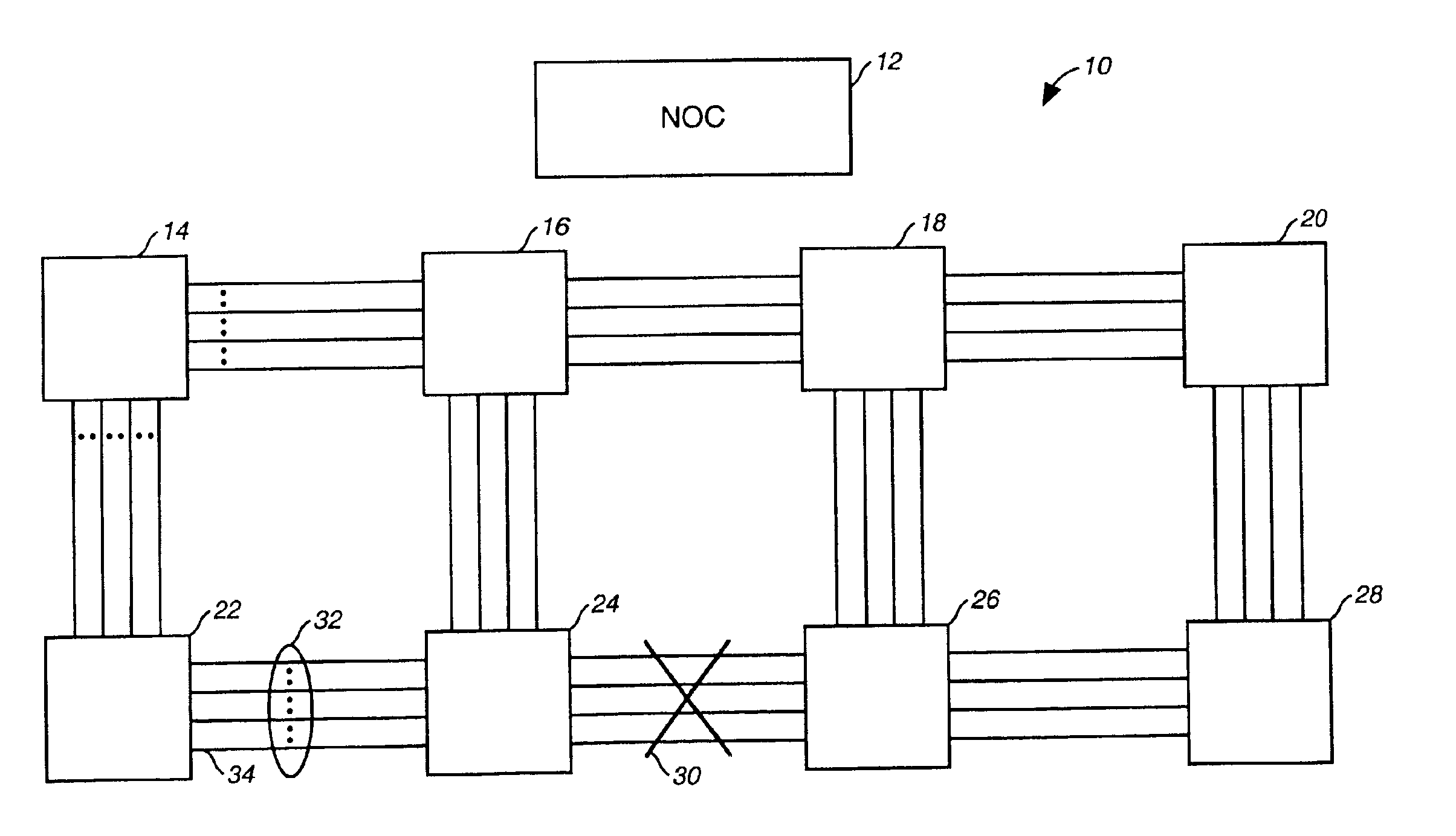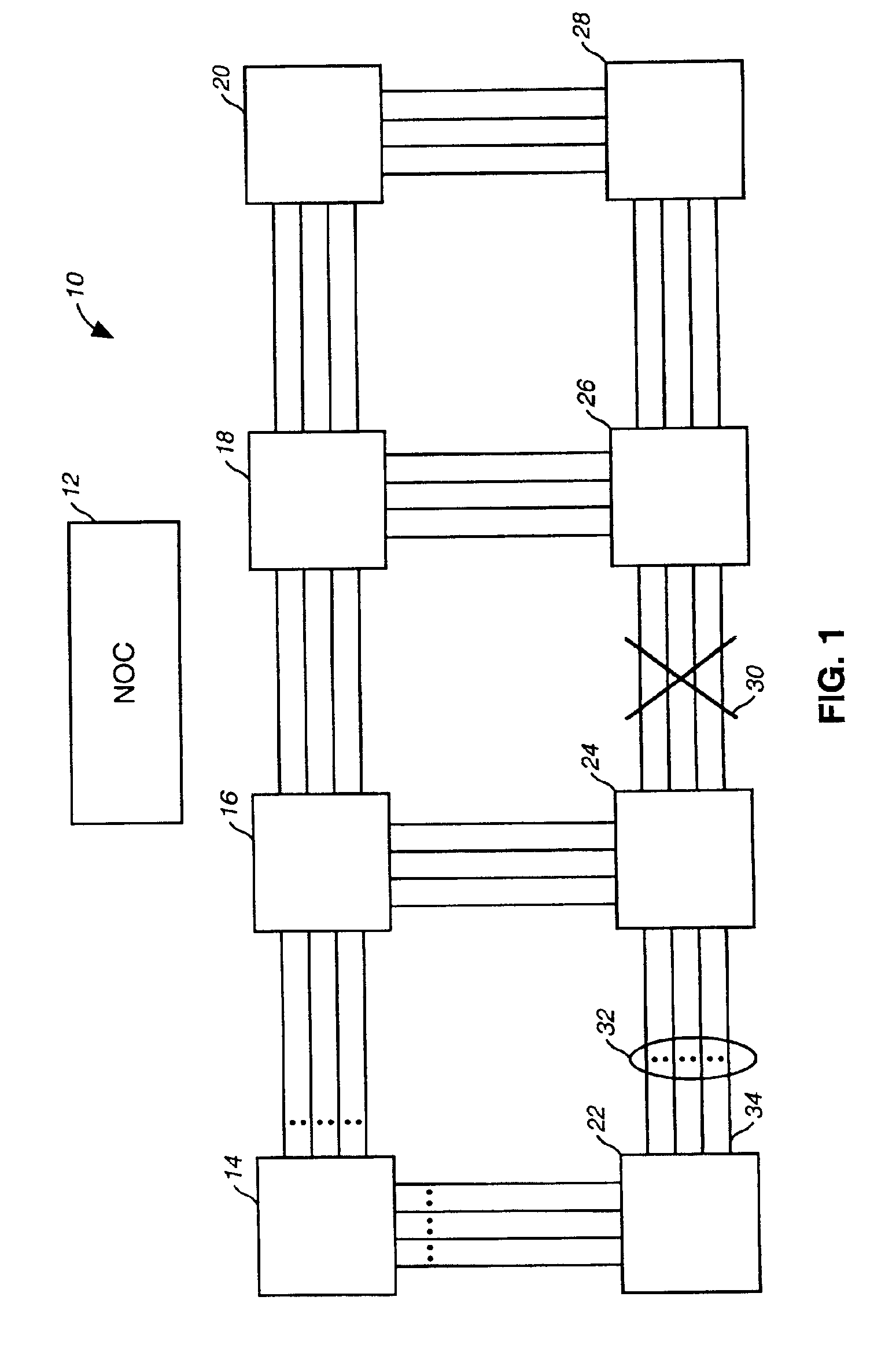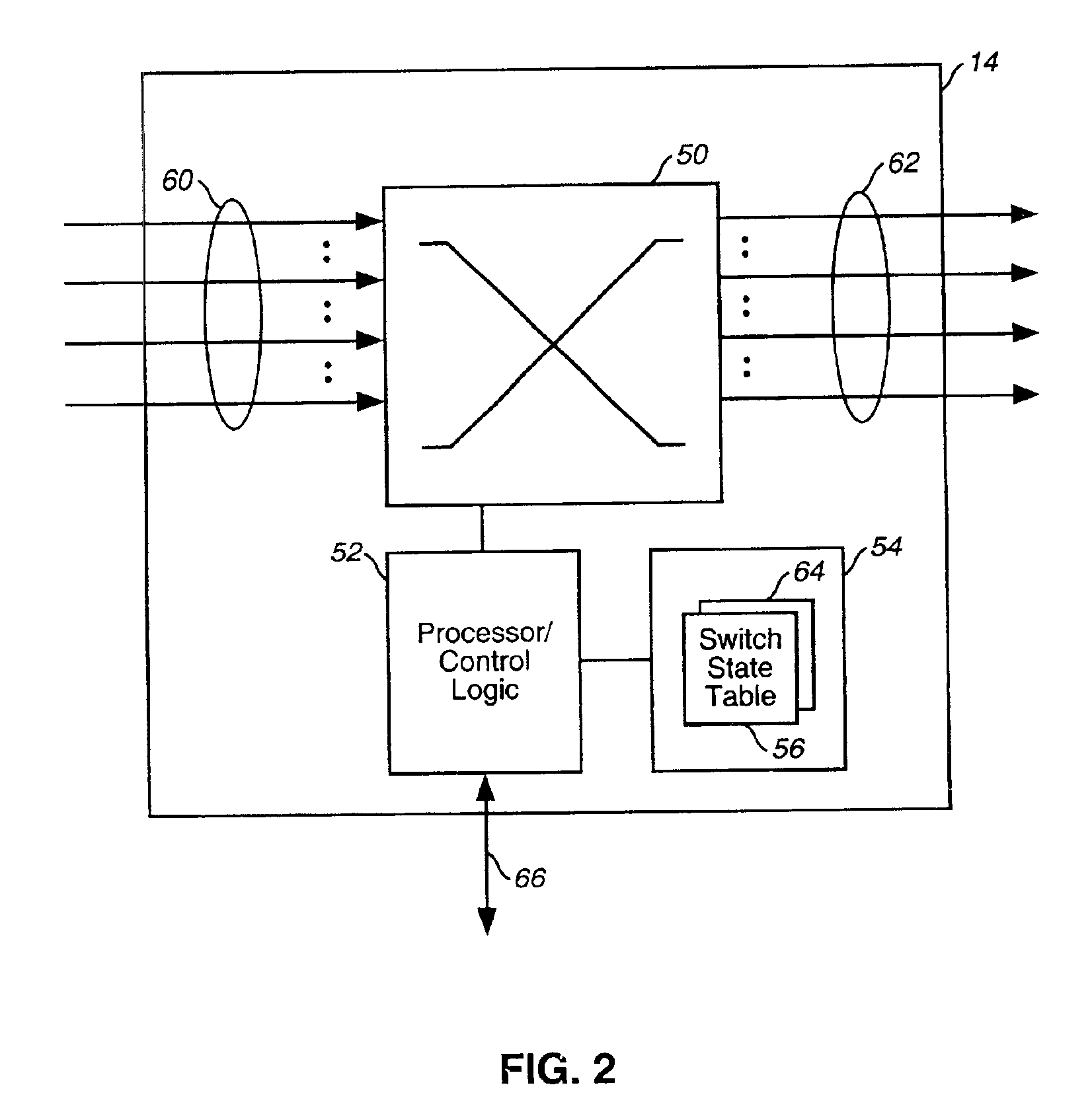Network restoration using refreshed switch state tables
a switch state and switch technology, applied in the field of network restoration, can solve the problems of optical fiber and optical equipment damage, optical network failures or faults, and various damage through a variety, and achieve optimal restoration, less unrestored traffic, and more accurate switch state tables
- Summary
- Abstract
- Description
- Claims
- Application Information
AI Technical Summary
Benefits of technology
Problems solved by technology
Method used
Image
Examples
Embodiment Construction
[0025]It should be understood at the outset that although an exemplary implementation of the present invention is illustrated below, the present invention may be implemented using any number of techniques, whether currently known or in existence. The present invention should in no way be limited to the exemplary implementations, drawings, and techniques illustrated below, including the exemplary design and implementation illustrated and described herein.
[0026]FIG. 1 is a block diagram that illustrates an optical network 10 that includes a plurality of Optical Cross Connect Switches (“OCCSs”) or nodes coupled in a mesh configuration through various fiber optic links, and a Network Operations Center (“NOC”) 12 in communication with the plurality of OCCSs or nodes of the optical network 10. The optical network 10 is provided in a mesh configuration (but could be provided in other network topologies) that includes an OCCS 14, an OCCS 16, an OCCS 18, an OCCS 20, an OCCS 22, an OCCS 24, a...
PUM
 Login to View More
Login to View More Abstract
Description
Claims
Application Information
 Login to View More
Login to View More - R&D
- Intellectual Property
- Life Sciences
- Materials
- Tech Scout
- Unparalleled Data Quality
- Higher Quality Content
- 60% Fewer Hallucinations
Browse by: Latest US Patents, China's latest patents, Technical Efficacy Thesaurus, Application Domain, Technology Topic, Popular Technical Reports.
© 2025 PatSnap. All rights reserved.Legal|Privacy policy|Modern Slavery Act Transparency Statement|Sitemap|About US| Contact US: help@patsnap.com



